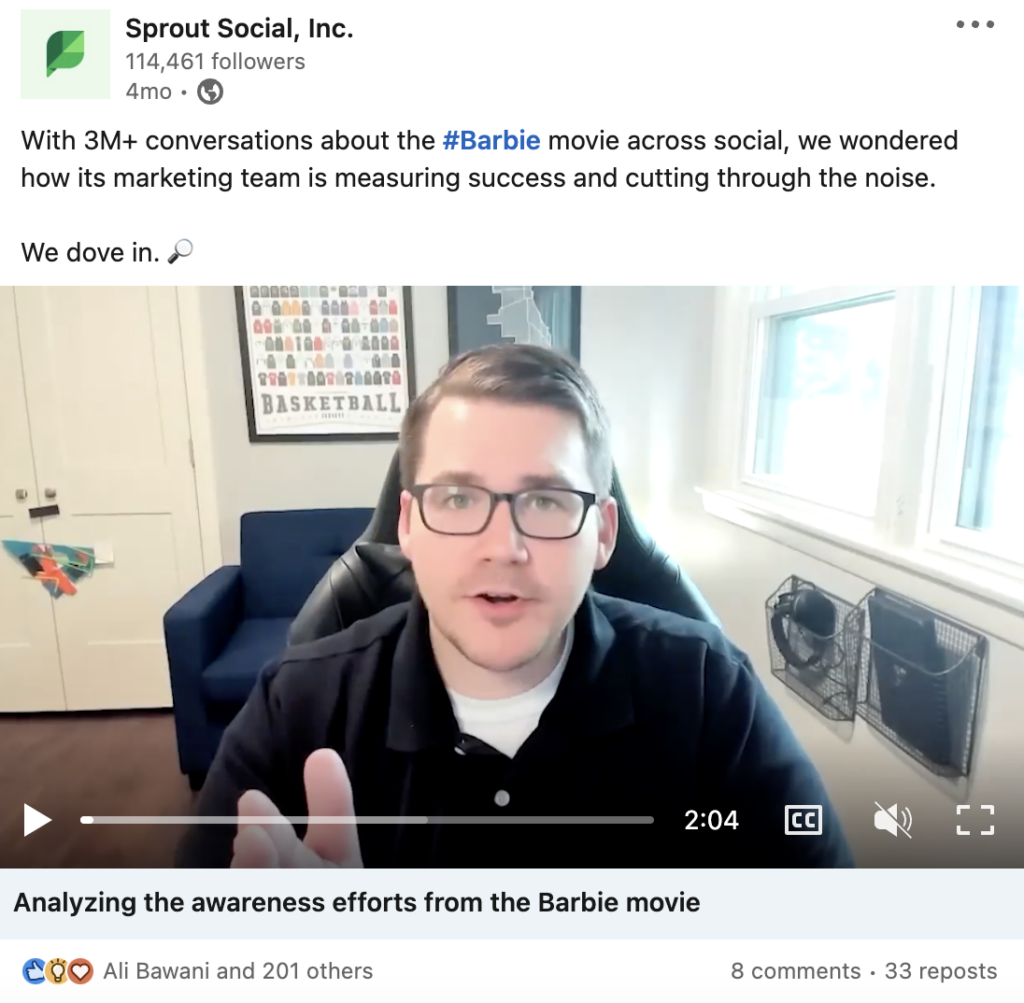To win, you need to know your opponent well. This means getting a nuanced perspective of their strengths and weaknesses—and understanding how your target audience perceives them. Competitive market research is the key to achieving this. It helps you better understand your top competitors and monitor market trends to refine your strategy based on data.
Social listening serves as a powerful competitive analysis tool, extracting targeted brand insights from widespread online conversations across social networks. You get real-time insights into consumer behavior, emerging trends and competitors’ activities, which you can use to promptly pivot strategies and stay ahead of the game.
Let’s dive deeper into how social listening gives you an edge when used for market research.
The competitive advantage of using social listening for marketing research
Social listening empowers you with real-world insights extracted from raw, unfiltered brand-related online chatter for a birds’ eye-view of the competitive landscape. These insights help you refine marketing strategies to optimize your return on investment (ROI). They also help you uncover whitespace opportunities to innovate and expand on product, pricing and geographic expansion strategies.
Competitive research also gives you insight into macro consumer trends such as the influence of elevated consumer prices on overall spending habits and brand preferences. Or, how to better target Gen Z, a demographic known for its high purchasing power and unique consumer behavior.
Competitive intelligence is especially critical in social media marketing because of the nature of social. As new platforms, features and trends emerge, social teams must keep competitive market research on their radar to prep for 2024.
Competitive listening gives social teams swift, comprehensive insights simultaneously from across social platforms, review sites and customer forums—at a fraction of the cost and time traditional research methods take. You’re able to overcome flux in platform algorithms and face continuously evolving consumer behavior. You also understand how your competitors are navigating these shifts and adapting their strategies to meet them.
Analyze sentiment in thousands of brand conversations to address customer needs more productively and ensure the competition doesn’t affect your market share.
Pairing cross-departmental knowledge with social listening for deeper insights
Social listening data gives you a deep understanding of your business environment not just for marketing but also other key areas such as product enhancement, finding growth opportunities and informing customer care.
Per The State of Social Media Report, 95% of business executives agree companies must rely more heavily on social media data to inform business decisions outside of marketing.
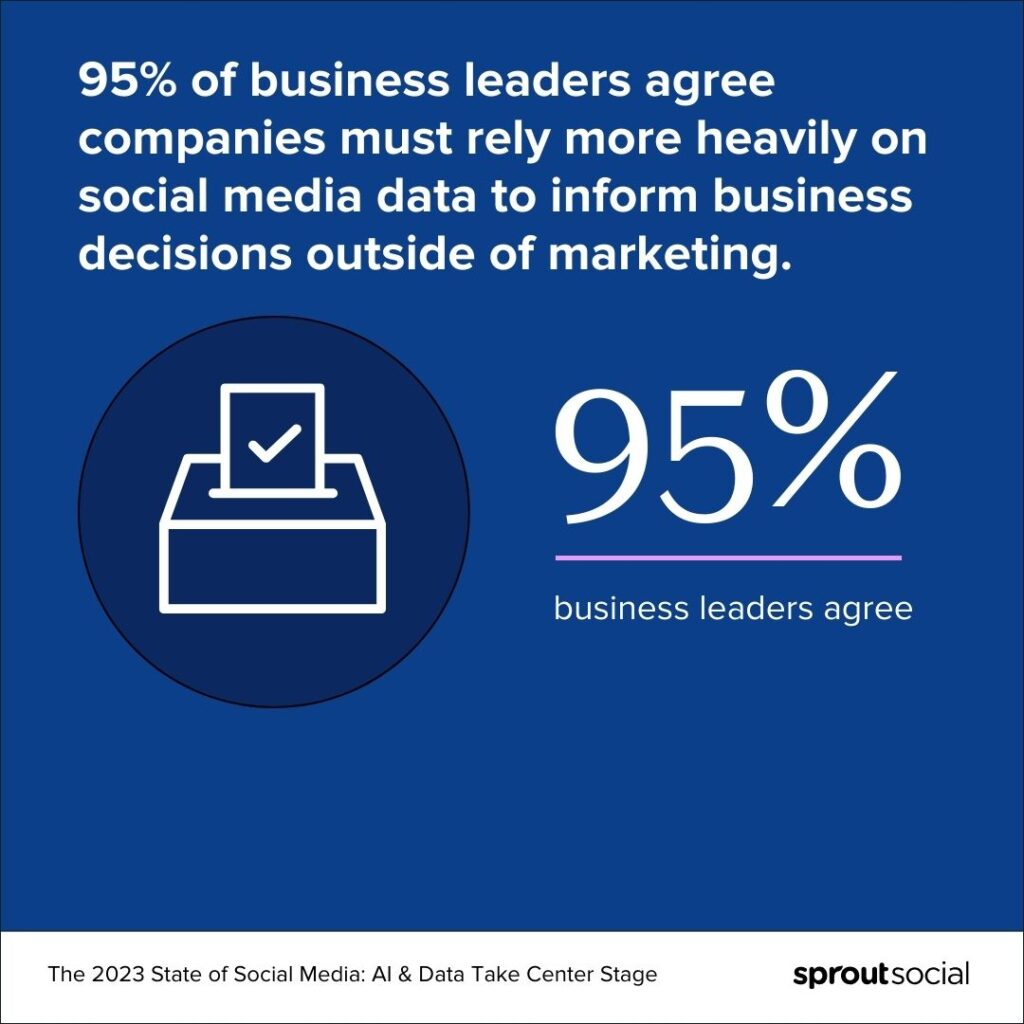
There is a reason behind this. As the latest Sprout Social Index ™ revealed, 68% of customers follow brands on social to stay informed about new products or services. They ask questions, talk to each other and discuss product and service alternatives. This is a wealth of customer-driven information waiting to be harnessed.
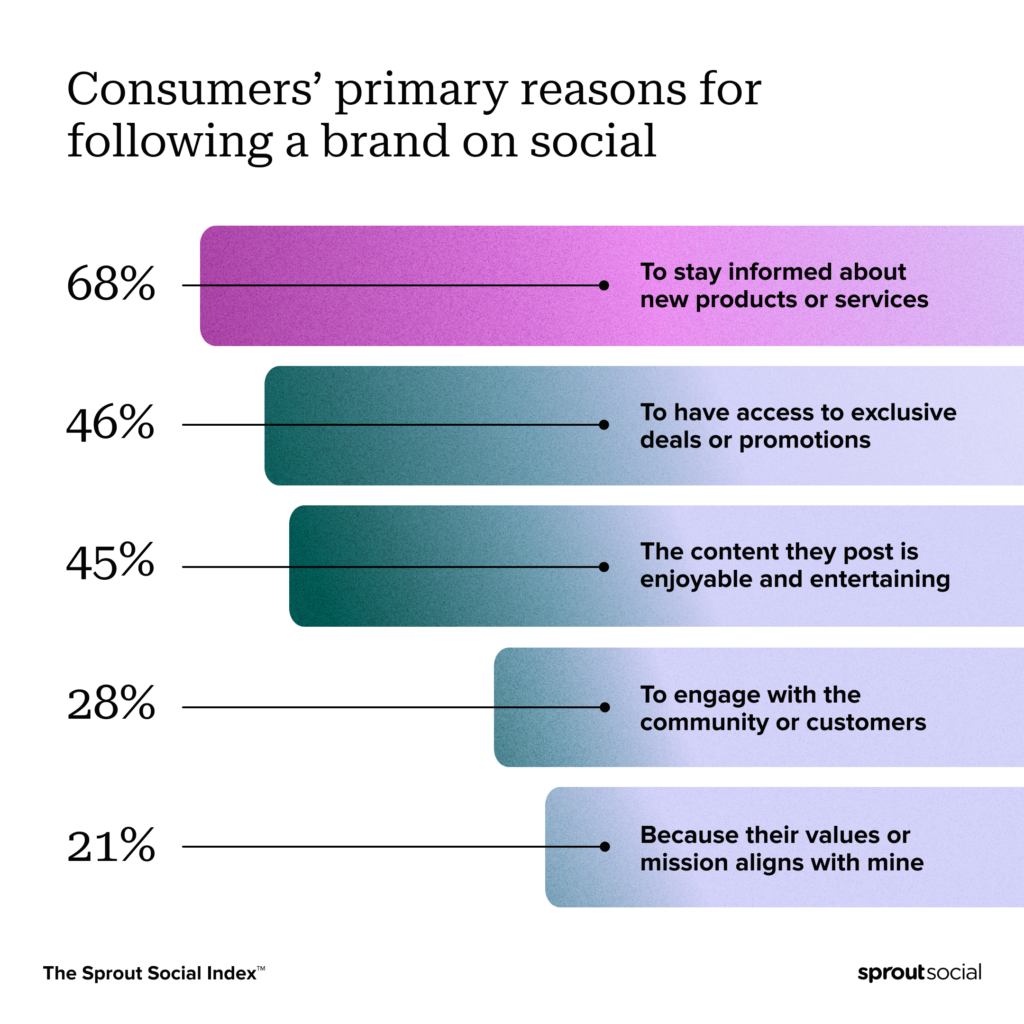
That’s why pairing cross-departmental knowledge with social listening insights is a win-win.
Social competitor analysis tools enable you to combine internal knowledge and social media intelligence to bridge disparities between how you think your audience perceives your brand and their actual sentiment. These insights, paired with data from your own CRM, product research and sales data, give you an even clearer picture of how to grow market share.
Building materials pioneer, James Hardie®, uses social listening for competitive research to do just this. They engage in audience and trend analysis, research product sentiment, identify industry influencers and conduct competitor comparisons to build holistic brand strategies beyond marketing.
“Not only is it good from a brand health and marketing angle, it’s also important information we can pass on to our sales teams and product teams. We can find trends and common themes that come up in conversations. We can identify not only our own brand advocates but brand advocates for our competition,” says Bridget Kulla, Senior Digital Marketing Manager at James Hardie.
Here’s a quick look at how you can combine insights from various departments with social listening.
Identify patterns and correlations
Look for patterns and overlaps between your internal knowledge and what social listening data reveals. This exercise will help you identify competitors that weren’t even on your radar before, enabling a more in-depth understanding of your market.
Integrate social listening workflows
Work with department leaders across the organization to educate all team members on the power of what social listening can do and where social insights can plug into their workflows.
Track listening data by topics
Marketing, sales and product teams each focus on different aspects of your brand experience. By narrowing your social media listening focus on data that is truly relevant to your goals, you can get insights from thousands of social conversations without getting overwhelmed.
Sprout’s Listening solution enables this kind of detailed competitive research analysis to facilitate cross-departmental collaboration. Our competitive listening capabilities help you identify keywords and hashtags in competitor-related conversations, revealing common topics in your industry.
Users can create Groups to analyze multiple competitors in one view and create separate Competitive Analysis Listening Templates to analyze data by product names. This is especially useful for large brands with multiple product lines.
Our integrated, AI-driven Query Builder provides customization options for your listening allowing you to include or exclude keywords. Here’s a quick video of the tool in action cutting through the noise in social listening.
How to champion your social listening findings across your organization
A key part of social media competitive analysis is ensuring you can build a collective narrative from all your research. This is necessary to champion your social listening research as a resource for decision-making to drive your business forward.
To get cross-organizational buy-in for listening insights, you also need to break down data silos and make sure your findings are digestible and actionable, especially for exec audiences.
Sprout Listening’s competitive analysis templates and reports with pre-designed topic templates help you achieve this. These templates give your teams access to unfiltered data from millions of social conversions to build winning brand strategies. And, they consolidate all your competitive research data into a unified source to facilitate swift collaboration across departments.
The template provides a comprehensive side-by-side comparison of key metrics, including total engagement, potential impressions, brand sentiment and share of voice. This allows for a straightforward analysis of your brand’s performance in comparison to competitors. These metrics also offer an in-depth understanding of which brand is leading the conversation and how your target audience perceives you versus the competition.
Use the templates to:
Find insights by network
Gain valuable insights into your content performance on different platforms such as Facebook, Instagram, and X (formerly known as Twitter) through network-specific performance and engagement reports. These reports give you a comparative view of which networks your competitors are heavily investing in, which in turn can inform your platform strategy or highlight a content gap you can fill for your audience.
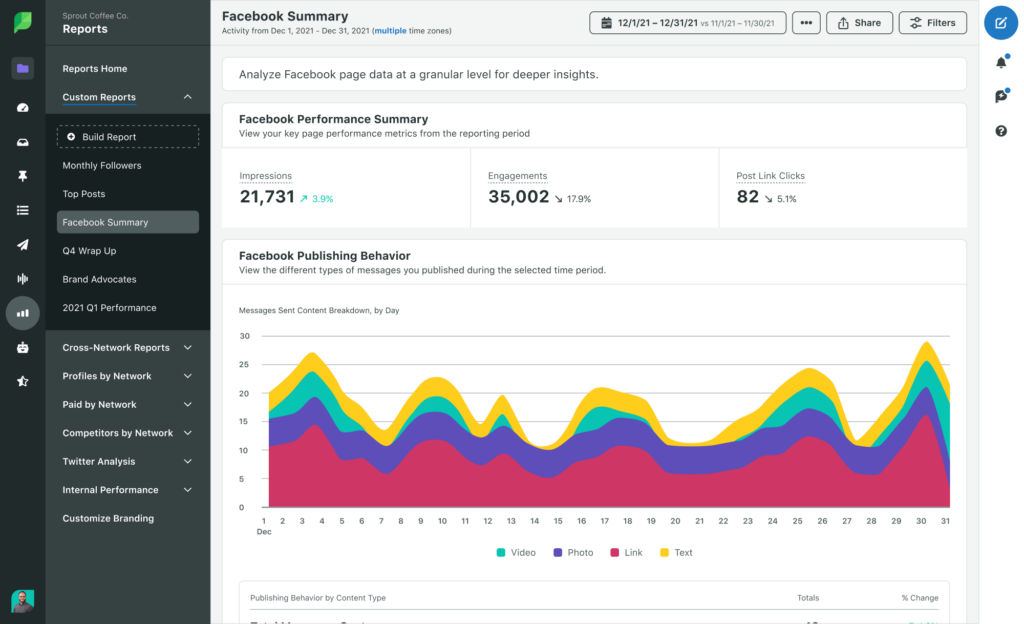
Also use Sprout’s Custom Reports to share relevant insights across departments. These reports help your teams combine cross-network competitor engagement and listening data for a holistic view.
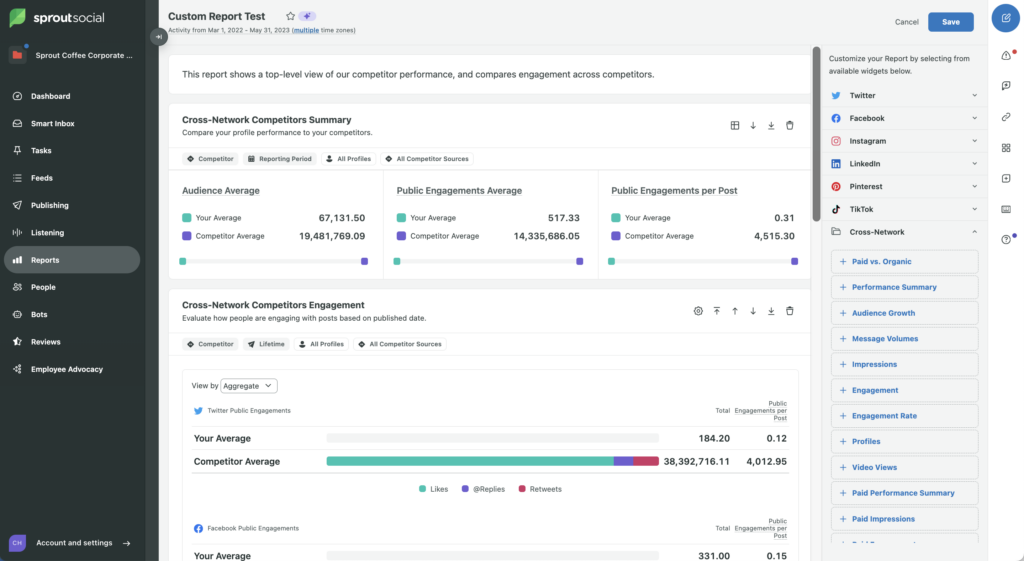
Spot top industry and competitor trends
Discover prominent trends and topics within your industry and extract insights on a number of factors such as competitors, content types, message styles and audience sentiment. Utilize keyword filters to refine your search and choose a date range to examine both long-term and short-term competitive trends.
For example, listening data can reveal an upward trend in consumer demand for products that are ethically sourced and environmentally friendly, which can influence your overall brand strategy and differentiate you from the crowd.
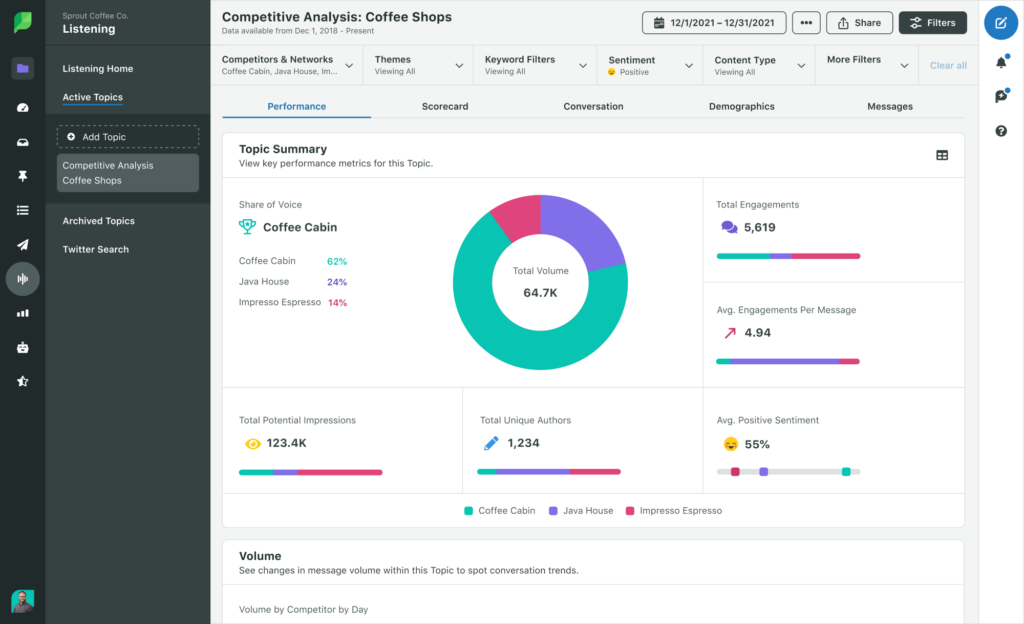
Assess detailed content performance and engagement data across Facebook, X and Instagram based on the uniqueness of each social network. For instance, content that excels on Instagram may not perform as well on Facebook due to differences in format and user behavior.
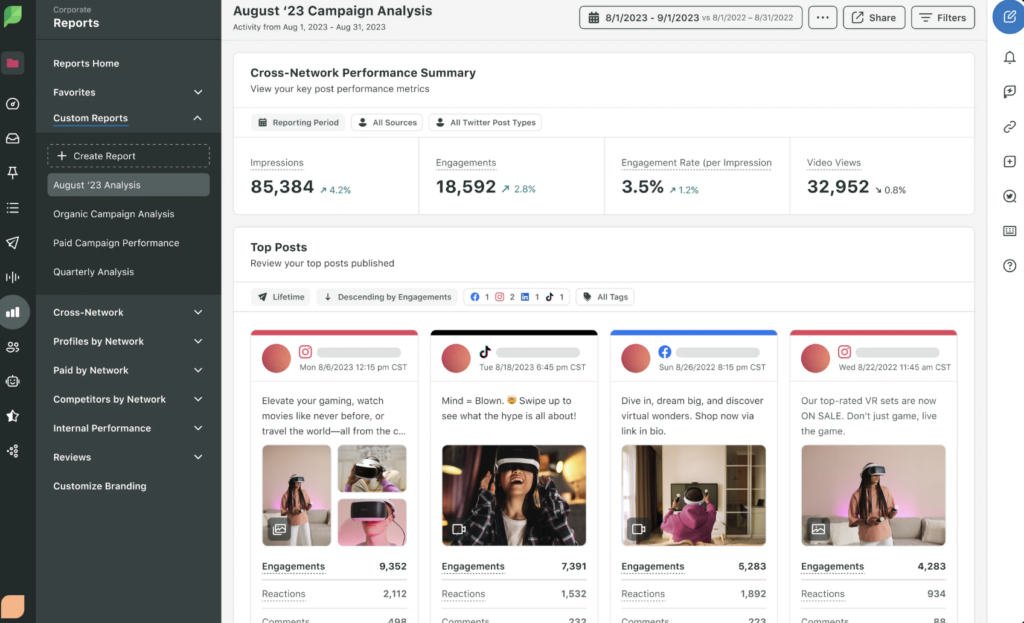
Identify areas of growth
Analyze feedback about your product and service to proactively address customer concerns and identify areas for improvement and growth. Also analyze competitor feedback and use those findings to refine your own ad messaging and develop more targeted selling propositions. This approach enables you to differentiate your brand while staying vigilant on competitor performance.
Integrate findings across your tech stack
Further strengthen the value of your competitive analysis by integrating your competitive research across your company’s tech stack. With Sprout’s Tableau Business Intelligence (BI) Connector, you can aggregate insights from multiple systems into rich data visualizations of key metrics throughout your customer journey. Track social engagements, average response rates for social customer care initiatives and your competitive share of voice.
You can also customize visuals and gain an immersive view by mapping social engagements and conversion rates to sales data.
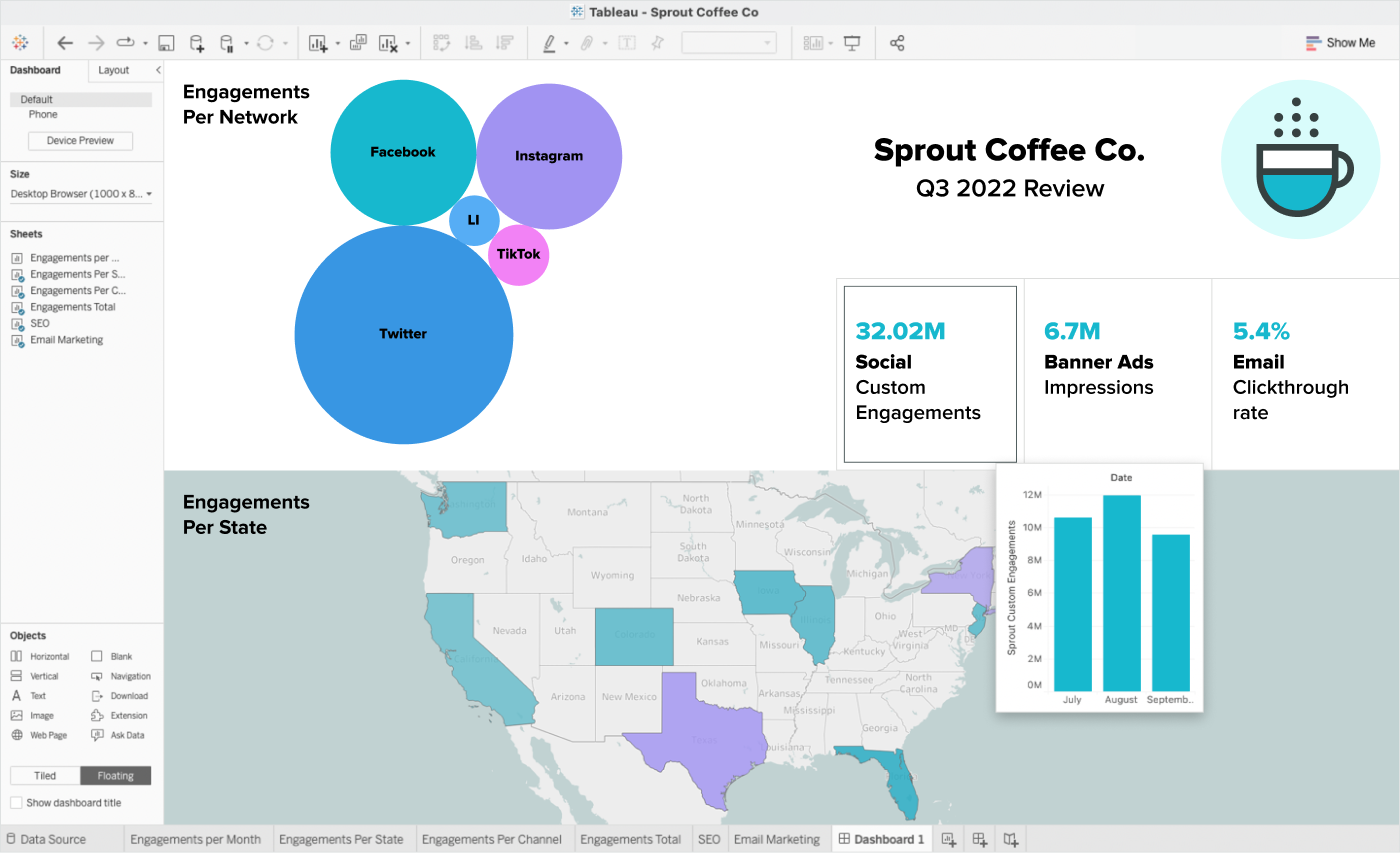
Put your competitive marketing research to use for a better 2024
Use social listening to conduct a thorough SWOT (strengths, weaknesses, opportunities, threats) analysis for yourself and your key competitors. This approach to competitive market research will provide you with actionable insights to navigate successfully through 2024 and beyond.
From analyzing your competitors’ pricing strategies and value props to assessing gaps in your content strategy, use Sprout’s listening templates and reports to identify opportunities and differentiate your brand from competitors.
Request a demo to deep dive into insights that matter.

